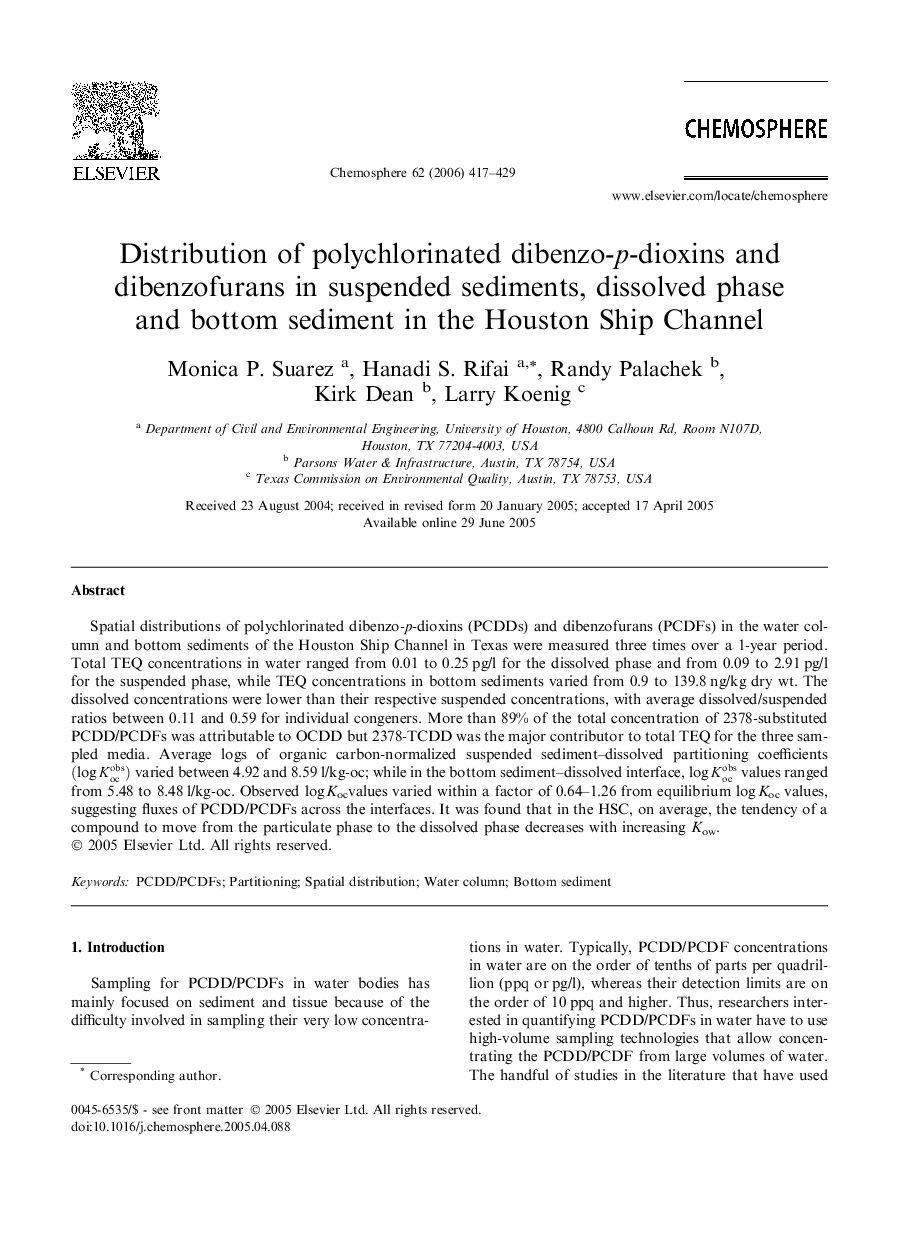| Article ID | Journal | Published Year | Pages | File Type |
|---|---|---|---|---|
| 4416254 | Chemosphere | 2006 | 13 Pages |
Spatial distributions of polychlorinated dibenzo-p-dioxins (PCDDs) and dibenzofurans (PCDFs) in the water column and bottom sediments of the Houston Ship Channel in Texas were measured three times over a 1-year period. Total TEQ concentrations in water ranged from 0.01 to 0.25 pg/l for the dissolved phase and from 0.09 to 2.91 pg/l for the suspended phase, while TEQ concentrations in bottom sediments varied from 0.9 to 139.8 ng/kg dry wt. The dissolved concentrations were lower than their respective suspended concentrations, with average dissolved/suspended ratios between 0.11 and 0.59 for individual congeners. More than 89% of the total concentration of 2378-substituted PCDD/PCDFs was attributable to OCDD but 2378-TCDD was the major contributor to total TEQ for the three sampled media. Average logs of organic carbon-normalized suspended sediment–dissolved partitioning coefficients (logKocobs) varied between 4.92 and 8.59 l/kg-oc; while in the bottom sediment–dissolved interface, logKocobs values ranged from 5.48 to 8.48 l/kg-oc. Observed log Kocvalues varied within a factor of 0.64–1.26 from equilibrium log Koc values, suggesting fluxes of PCDD/PCDFs across the interfaces. It was found that in the HSC, on average, the tendency of a compound to move from the particulate phase to the dissolved phase decreases with increasing Kow.
